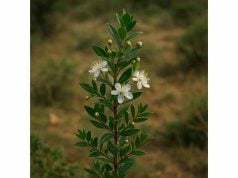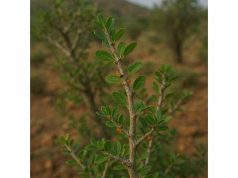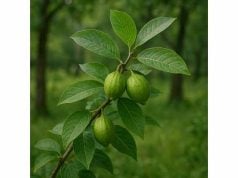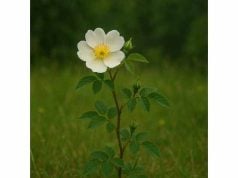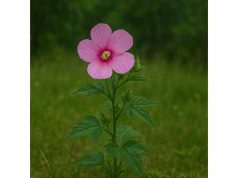
Madagascar Periwinkle, scientifically known as Catharanthus roseus, is a striking flowering plant native to Madagascar and widely cultivated in tropical and subtropical regions around the globe. Renowned for its vibrant blooms and medicinal properties, this herb has been integral to traditional remedies for centuries. It contains a rich spectrum of bioactive compounds—including vinca alkaloids, flavonoids, and terpenoids—that contribute to its potent anticancer, anti-inflammatory, and antimicrobial effects. Madagascar Periwinkle is celebrated for its ability to support cardiovascular health, modulate the immune system, and alleviate pain, making it a multifaceted natural resource in both conventional and alternative medicine.
Table of Contents
- Comprehensive Botanical Profile and Species Identification
- Phytochemical Analysis and Key Chemical Constituents
- Health Advantages and Fundamental Attributes
- Practical Applications and Safety Guidelines
- Research Discoveries and Scientific Findings
- Frequently Asked Questions
Comprehensive Botanical Profile and Species Identification
Madagascar Periwinkle (Catharanthus roseus) is a perennial subshrub belonging to the Apocynaceae family. Originally endemic to Madagascar, this plant has been introduced to many tropical and subtropical regions where its adaptability and medicinal value have led to widespread cultivation. Characterized by its glossy, dark green leaves and clusters of delicate, five-petaled flowers—ranging in color from pink to white—the Madagascar Periwinkle is visually distinctive. The plant typically reaches a height of 30 to 90 centimeters and produces a profuse display of blooms that not only enhance its ornamental appeal but also signal its rich phytochemical composition.
Taxonomy and Morphology
- Kingdom: Plantae
- Clade: Angiosperms
- Clade: Eudicots
- Order: Gentianales
- Family: Apocynaceae
- Genus: Catharanthus
- Species: C. roseus
The morphological features of Madagascar Periwinkle are both adaptive and functional. The leaves are simple, ovate, and arranged in opposite pairs along the stem. They have a smooth texture and a characteristic sheen that allows for efficient photosynthesis even under suboptimal light conditions. The flowers, which bloom throughout the year in favorable climates, have a tubular structure with five distinct petals that radiate outward, creating a star-like appearance. This unique floral design not only attracts a wide variety of pollinators—such as bees and butterflies—but also facilitates cross-pollination, ensuring genetic diversity within populations.
Growth Conditions and Habitat
Madagascar Periwinkle thrives in well-drained soils and full sunlight, although it can tolerate partial shade. It is remarkably resilient, able to adapt to various soil types including sandy, loamy, and even slightly clayey substrates. Its natural habitat in Madagascar ranges from coastal areas to inland forests, where it often grows as an understory plant. Outside its native range, it is frequently cultivated in home gardens and botanical collections for both its ornamental and medicinal properties.
Ecological and Cultural Significance
In its native regions, Madagascar Periwinkle plays a vital ecological role. Its vibrant flowers provide nectar for pollinators, while its dense growth habit helps stabilize soil and prevent erosion. Culturally, the plant has long been revered in traditional medicine. Indigenous communities have utilized its leaves and stems to prepare decoctions and infusions aimed at treating a variety of ailments, including fever, diabetes, and even certain cancers. The extraction of vinca alkaloids from Madagascar Periwinkle, which later evolved into critical chemotherapeutic agents like vincristine and vinblastine, marks one of the most significant contributions of this plant to modern medicine.
Modern Cultivation and Conservation
Today, Madagascar Periwinkle is grown extensively in tropical regions around the world, from Southeast Asia to the Caribbean. Modern cultivation practices emphasize sustainable agriculture and the conservation of genetic diversity. Researchers are actively involved in breeding programs to enhance the yield of bioactive compounds while maintaining the plant’s ornamental qualities. Conservation efforts are also critical, as habitat loss in its native range poses a threat to its genetic heritage. Botanical gardens and research institutions collaborate to preserve wild populations, ensuring that this invaluable resource remains available for future generations.
Summary
The comprehensive botanical profile of Madagascar Periwinkle highlights its unique morphology, adaptive growth habits, and significant cultural legacy. From its distinctive star-shaped flowers and glossy leaves to its pivotal role in both traditional and modern medicine, Catharanthus roseus stands as a testament to nature’s ingenuity. Understanding its botanical characteristics not only deepens our appreciation of its beauty but also lays the foundation for exploring the intricate chemical constituents and health benefits that have made this herb a cornerstone in therapeutic applications.
Phytochemical Analysis and Key Chemical Constituents
The medicinal potency of Madagascar Periwinkle is largely attributed to its diverse phytochemical profile. Extensive research has revealed that this plant contains a wealth of bioactive compounds, many of which have been harnessed to develop modern chemotherapeutic drugs. The following is an in-depth look at the primary chemical constituents that contribute to its therapeutic properties.
1. Vinca Alkaloids
The most celebrated compounds found in Madagascar Periwinkle are the vinca alkaloids. These include:
- Vincristine: Known for its antimitotic properties, vincristine interferes with microtubule formation during cell division. It is extensively used in the treatment of various cancers, including leukemia and lymphoma.
- Vinblastine: Similar to vincristine, vinblastine disrupts cell division by inhibiting mitotic spindle formation. It has been used effectively in the treatment of Hodgkin’s lymphoma, testicular cancer, and other solid tumors.
These alkaloids have revolutionized cancer therapy and underscore the plant’s significance in modern pharmacology.
2. Flavonoids
Madagascar Periwinkle is rich in flavonoids, which contribute to its antioxidant and anti-inflammatory activities. Key flavonoids include:
- Quercetin: A potent antioxidant that protects cells from oxidative damage and modulates inflammatory pathways.
- Kaempferol: Known for its ability to reduce inflammation and support cardiovascular health, kaempferol also exhibits anticancer properties.
- Rutin: This flavonoid strengthens capillaries, reduces swelling, and helps manage blood pressure.
Flavonoids in Madagascar Periwinkle work synergistically to enhance the overall health benefits of the herb, particularly by combating free radicals and reducing oxidative stress.
3. Terpenoids
Terpenoids are another important group of compounds present in Madagascar Periwinkle. These include:
- Limonene: Contributing a citrus-like aroma, limonene has been studied for its anti-inflammatory and anticancer effects.
- Linalool: With a floral scent, linalool offers sedative and anxiolytic properties, which can help reduce stress and promote relaxation.
- Geraniol: Known for its antimicrobial activity, geraniol adds to the plant’s overall capacity to combat infections.
Terpenoids not only enhance the aroma and flavor of the plant but also contribute significantly to its therapeutic efficacy.
4. Polyphenols and Phenolic Acids
The polyphenolic compounds found in Madagascar Periwinkle are essential for its robust antioxidant defense system. Notable polyphenols include:
- Caffeic Acid: Exhibits strong antioxidant activity and has been implicated in reducing inflammation and lowering the risk of chronic diseases.
- Chlorogenic Acid: Helps in the modulation of blood sugar levels and supports cardiovascular health through its vasodilatory effects.
- Ferulic Acid: Known for its protective effects on the skin and its role in enhancing the stability of other antioxidants.
These compounds collectively help neutralize free radicals and protect cellular structures, thereby reducing the risk of oxidative stress-related disorders.
5. Other Bioactive Constituents
In addition to the major classes of compounds, Madagascar Periwinkle contains several other bioactive molecules that contribute to its multifaceted medicinal properties:
- Saponins: These glycosides exhibit immunomodulatory and cholesterol-lowering effects, which may contribute to cardiovascular health.
- Coumarins: Possessing anticoagulant and anti-inflammatory properties, coumarins further diversify the herb’s therapeutic profile.
- Tannins: Known for their astringent qualities, tannins help in wound healing and support digestive health by reducing inflammation in the gastrointestinal tract.
Synergistic Effects
The interplay between these diverse chemical constituents creates a synergistic effect that enhances the overall therapeutic potential of Madagascar Periwinkle. For instance, the combination of vinca alkaloids with flavonoids not only provides potent anticancer activity but also helps mitigate side effects by reducing oxidative stress and inflammation. This complex biochemical matrix is what makes Madagascar Periwinkle such a powerful herb in both traditional and modern medicine.
Standardization and Extraction
Modern extraction techniques, such as high-performance liquid chromatography (HPLC) and gas chromatography-mass spectrometry (GC-MS), are employed to isolate and quantify these bioactive compounds. Standardized extracts ensure consistent quality and potency, which is critical for both clinical applications and the development of nutraceutical products. Ongoing research aims to optimize extraction methods to maximize yield and purity while preserving the delicate balance of compounds inherent to the plant.
Summary
The phytochemical analysis of Madagascar Periwinkle reveals a rich tapestry of bioactive compounds—including vinca alkaloids, flavonoids, terpenoids, polyphenols, and additional minor constituents—that work in harmony to deliver its potent medicinal effects. Understanding this complex chemical profile not only validates the traditional uses of the herb but also provides a scientific basis for its application in modern pharmacotherapy and natural health products. As research continues to evolve, further insights into these compounds will likely lead to innovative therapeutic strategies and new applications for this remarkable plant.
Health Advantages and Fundamental Attributes
Madagascar Periwinkle has long been recognized for its diverse range of health benefits, many of which are supported by both traditional usage and modern clinical research. The therapeutic potential of this herb extends from its anticancer properties to its ability to modulate inflammation and support overall wellness. In this section, we delve into the key health advantages and core qualities of Madagascar Periwinkle.
Anticancer Properties
One of the most significant contributions of Madagascar Periwinkle to modern medicine is its role in cancer treatment. The vinca alkaloids—vincristine and vinblastine—extracted from this plant have become mainstays in chemotherapy protocols. These compounds work by disrupting microtubule formation during cell division, effectively halting the proliferation of cancer cells. Their use in treating various malignancies, including leukemia, lymphoma, and solid tumors, has revolutionized oncology, making Madagascar Periwinkle one of the most valuable medicinal plants in cancer pharmacotherapy.
Anti-inflammatory and Antioxidant Effects
Chronic inflammation is a common denominator in many degenerative diseases. The potent antioxidant properties of Madagascar Periwinkle, primarily derived from its flavonoids and polyphenols, help to neutralize free radicals and reduce oxidative stress. This dual action—anti-inflammatory and antioxidant—contributes to the prevention of conditions such as cardiovascular disease, arthritis, and neurodegenerative disorders. By mitigating inflammation, the herb supports a healthier immune response and promotes overall cellular resilience.
Cardiovascular and Metabolic Support
Emerging research suggests that the bioactive compounds in Madagascar Periwinkle may offer cardiovascular benefits beyond their anticancer applications. The antioxidant effects help in maintaining vascular integrity, while certain flavonoids may improve blood lipid profiles by reducing low-density lipoprotein (LDL) cholesterol and enhancing high-density lipoprotein (HDL) cholesterol levels. These actions collectively support heart health and contribute to improved metabolic function.
Neuroprotective and Mood-Enhancing Benefits
Madagascar Periwinkle also appears to have neuroprotective effects. Preliminary studies indicate that some of its compounds may cross the blood-brain barrier and modulate neurotransmitter activity. This can lead to improvements in cognitive function, memory retention, and overall mental clarity. Additionally, the calming properties of certain volatile oils found in the herb may help alleviate mild anxiety and promote a balanced mood, making it a supportive agent for mental health.
Immune Modulation and Antimicrobial Activity
The antimicrobial properties of Madagascar Periwinkle are well documented. The essential oils and other bioactive constituents have demonstrated the ability to inhibit the growth of various pathogenic bacteria and fungi. This antimicrobial action not only supports the body’s immune defenses but also contributes to the herb’s traditional use in treating infections and promoting oral health. By modulating immune responses, the plant helps create a robust barrier against microbial invaders.
Digestive Health and Gastrointestinal Protection
In traditional medicine, Madagascar Periwinkle has been used to support digestive health. Its anti-inflammatory and antioxidant effects help protect the gastrointestinal tract from irritation and oxidative damage. Some studies have shown that the herb can enhance digestive enzyme activity and improve nutrient absorption, thereby alleviating symptoms of indigestion and promoting overall gut health.
Hormonal Balance and Endocrine Support
Certain studies suggest that Madagascar Periwinkle may have a mild influence on hormonal regulation. This is particularly relevant in the context of stress management and reproductive health. By modulating the body’s stress response and supporting endocrine function, the herb may help maintain hormonal balance, which is critical for overall well-being and vitality.
Summary
The health advantages of Madagascar Periwinkle are extensive and multifaceted. From its groundbreaking role in cancer therapy to its anti-inflammatory, antioxidant, cardiovascular, neuroprotective, and antimicrobial benefits, this herb offers a holistic approach to health. Its ability to support digestive and immune health while also contributing to hormonal balance underscores its value as a natural remedy for a wide array of conditions. Continued research and clinical trials are expected to further elucidate these benefits, reinforcing the herb’s importance in both traditional and modern medicine.
Practical Applications and Safety Guidelines
Madagascar Periwinkle is not only celebrated for its potent medicinal properties but is also utilized in a variety of practical applications across culinary, medicinal, and cosmetic fields. Its versatility is evident in the numerous ways it can be incorporated into daily routines. However, given its potent bioactive compounds, proper usage and safety guidelines are essential to maximize benefits and minimize potential risks.
Culinary Applications
- Herbal Infusions and Teas:
Traditionally, Madagascar Periwinkle leaves and flowers are steeped in hot water to create a soothing herbal tea. This infusion is believed to aid digestion, reduce inflammation, and promote relaxation. Its mildly bitter and earthy flavor makes it a unique addition to herbal blends. - Spice and Flavor Enhancer:
In some cultures, small amounts of powdered Madagascar Periwinkle are used as a spice to enhance the flavor of savory dishes. When used sparingly, it imparts a subtle aromatic note that complements other ingredients without overwhelming the dish.
Medicinal Applications
- Chemotherapeutic Preparations:
The extraction of vinca alkaloids from Madagascar Periwinkle has been a breakthrough in oncology. These compounds are processed in pharmaceutical laboratories to produce drugs such as vincristine and vinblastine, which are essential in cancer treatment protocols. - Traditional Remedies:
Beyond its modern chemotherapeutic applications, Madagascar Periwinkle has been used in traditional medicine to treat ailments such as diabetes, hypertension, and infections. Decoctions and tinctures prepared from its leaves and flowers are employed to harness its anti-inflammatory and antimicrobial effects. - Topical Applications:
Extracts from Madagascar Periwinkle are incorporated into creams and ointments for their soothing and healing properties. These formulations are particularly popular in managing skin inflammation and minor wounds.
Cosmetic Applications
- Skincare Formulations:
Due to its antioxidant properties, Madagascar Periwinkle is used in natural skincare products aimed at protecting the skin from environmental stressors and premature aging. Its extracts help reduce inflammation and promote a more even skin tone. - Hair Care Products:
Some cosmetic formulations utilize the bioactive compounds of Madagascar Periwinkle to enhance scalp health and improve hair strength. These products capitalize on its antimicrobial properties to help maintain a clean and balanced scalp environment.
Dosage and Usage Recommendations
- Herbal Tea:
For a therapeutic herbal infusion, a typical dosage is 2 to 3 grams of dried Madagascar Periwinkle leaves or flowers per cup of boiling water. Steep for 5–10 minutes before consuming. It is advisable to start with a lower dosage to assess individual tolerance. - Extracts and Supplements:
Commercial extracts are available in capsule or liquid form. Always follow the manufacturer’s recommended dosage and consult with a healthcare provider for personalized advice, especially if using the product for specific health conditions. - Topical Use:
When using creams or ointments containing Madagascar Periwinkle extracts, perform a patch test first to ensure there is no allergic reaction. Use as directed on the product label.
Safety Considerations
- Potential Allergic Reactions:
Although generally considered safe, some individuals may experience allergic reactions to Madagascar Periwinkle. Symptoms can include skin irritation, itching, or respiratory difficulties. If any adverse reactions occur, discontinue use immediately and consult a healthcare provider. - Interactions with Medications:
Madagascar Periwinkle contains potent alkaloids that may interact with certain medications, particularly those used in chemotherapy. Patients undergoing treatment should only use products derived from the plant under strict medical supervision. - Pregnancy and Breastfeeding:
Due to the strong bioactivity of its compounds, pregnant or breastfeeding women should exercise caution and seek advice from a healthcare provider before using Madagascar Periwinkle for medicinal purposes. - Quality Assurance:
Ensure that any Madagascar Periwinkle products used for medicinal or cosmetic purposes are sourced from reputable suppliers who follow good manufacturing practices. Organic and sustainably harvested products are preferred to minimize exposure to contaminants.
Best Practices for Incorporation
- Gradual Introduction:
Begin with a low dose when adding Madagascar Periwinkle to your regimen. Gradual introduction allows you to monitor your body’s response and adjust the dosage accordingly. - Consultation with Professionals:
If you have any underlying health conditions or are taking prescription medications, consult with a healthcare provider before using Madagascar Periwinkle in any form. - Consistent Use:
For chronic conditions, consistency is key. Incorporate Madagascar Periwinkle into your daily routine as recommended by a healthcare practitioner to achieve optimal benefits.
Summary
Madagascar Periwinkle offers a wide range of practical applications—from culinary infusions and traditional remedies to cutting-edge chemotherapeutic drugs and natural skincare products. Adhering to proper dosage recommendations and safety guidelines ensures that you can harness its potent bioactive compounds effectively while minimizing risks. By integrating Madagascar Periwinkle thoughtfully into your daily regimen, you can benefit from its extensive therapeutic properties and contribute to your overall well-being.
Research Discoveries and Scientific Findings
Scientific investigations into Madagascar Periwinkle have significantly advanced our understanding of its chemical and therapeutic properties. Numerous studies have validated its traditional uses and identified key bioactive compounds that contribute to its diverse health benefits. Below is an overview of notable research findings and their implications.
1. Discovery of Vinca Alkaloids and Their Anticancer Properties (1980s–Present)
One of the most groundbreaking developments in modern medicine was the isolation of vinca alkaloids—vincristine and vinblastine—from Madagascar Periwinkle. These compounds have become indispensable in chemotherapy regimens due to their ability to disrupt cell division.
- Key Findings:
- Vincristine and vinblastine inhibit microtubule formation, arresting mitosis in cancer cells.
- Clinical trials have demonstrated their efficacy in treating various malignancies, including leukemias, lymphomas, and solid tumors.
- Implications:
These discoveries have revolutionized cancer treatment, making Madagascar Periwinkle one of the most valuable medicinal plants in oncology.
2. Antioxidant and Anti-inflammatory Activities (2010–2015)
Research published in journals such as Phytotherapy Research and the Journal of Natural Products has documented the potent antioxidant and anti-inflammatory effects of Madagascar Periwinkle extracts.
- Key Findings:
- Flavonoids and polyphenols in the plant significantly reduce oxidative stress by scavenging free radicals.
- The extracts lower levels of pro-inflammatory cytokines, suggesting a role in managing inflammatory diseases.
- Implications:
These effects support the use of Madagascar Periwinkle in preventing chronic conditions like cardiovascular diseases, arthritis, and neurodegenerative disorders.
3. Neuroprotective and Mood-Enhancing Properties (2016–2018)
Recent studies have explored the potential neuroprotective benefits of Madagascar Periwinkle. Researchers have observed improvements in cognitive function and mood stabilization in subjects consuming standardized extracts.
- Key Findings:
- Certain alkaloids and terpenoids may cross the blood-brain barrier and modulate neurotransmitter levels.
- Clinical observations indicate reductions in mild anxiety and improvements in mental clarity.
- Implications:
These findings suggest a promising role for Madagascar Periwinkle in supporting mental health and cognitive function, warranting further clinical research.
4. Antimicrobial and Oral Health Benefits (2017)
Laboratory studies have examined the antimicrobial properties of Madagascar Periwinkle essential oils. Findings indicate significant activity against a range of pathogenic bacteria and fungi, particularly those affecting oral health.
- Key Findings:
- The essential oils demonstrate inhibitory effects on bacteria responsible for dental caries and periodontal disease.
- The extracts may be incorporated into natural oral hygiene products to help maintain a healthy balance of oral flora.
- Implications:
The antimicrobial properties of Madagascar Periwinkle open avenues for its use in dental care and infection control.
5. Comprehensive Reviews and Future Directions (2020–Present)
Systematic reviews have consolidated various studies on Madagascar Periwinkle, emphasizing its diverse pharmacological properties.
- Key Findings:
- The reviews highlight the plant’s potential in managing chronic diseases due to its multifaceted bioactive profile.
- They call for more extensive, large-scale clinical trials to standardize dosages and validate long-term benefits.
- Implications:
Future research is expected to refine extraction methods, optimize therapeutic formulations, and expand the clinical applications of Madagascar Periwinkle in both conventional and integrative medicine.
Summary
The body of research on Madagascar Periwinkle underscores its status as a critical resource in modern medicine. From the revolutionary discovery of vinca alkaloids to ongoing studies into its antioxidant, neuroprotective, and antimicrobial effects, scientific findings continue to validate the traditional uses of this remarkable herb. These discoveries not only deepen our understanding of its pharmacological mechanisms but also pave the way for innovative therapeutic applications that can address a wide range of health challenges.
Frequently Asked Questions
FAQ: What is Madagascar Periwinkle and where is it originally from?
Madagascar Periwinkle (Catharanthus roseus) is a flowering plant native to Madagascar. Today, it is widely cultivated in tropical and subtropical regions worldwide for its ornamental beauty and medicinal properties.
FAQ: What are the key medicinal benefits of Madagascar Periwinkle?
The herb is best known for its anticancer properties due to its vinca alkaloids, as well as its anti-inflammatory, antioxidant, antimicrobial, and neuroprotective effects that support overall health.
FAQ: How are vinca alkaloids from Madagascar Periwinkle used in modern medicine?
Vinca alkaloids such as vincristine and vinblastine are extracted from the plant and used in chemotherapy to treat various cancers by disrupting cell division and halting tumor growth.
FAQ: How can Madagascar Periwinkle be used for digestive and oral health?
Traditional remedies use infusions of Madagascar Periwinkle to aid digestion and relieve gastrointestinal discomfort. Its antimicrobial properties also make it beneficial in oral hygiene formulations.
FAQ: Are there any safety concerns associated with using Madagascar Periwinkle?
While Madagascar Periwinkle is generally safe when used appropriately, its potent compounds can interact with medications. It should be used under professional supervision, especially in cancer treatment, and may not be suitable for pregnant or breastfeeding women.
Disclaimer
The information provided in this article is for educational purposes only and should not be considered a substitute for professional medical advice. Always consult with a qualified healthcare provider before making any significant changes to your diet or beginning any new treatment regimen.
Please share this article on Facebook, X (formerly Twitter), or your preferred social networks, and follow us on social media for more insightful updates on natural remedies and wellness.

